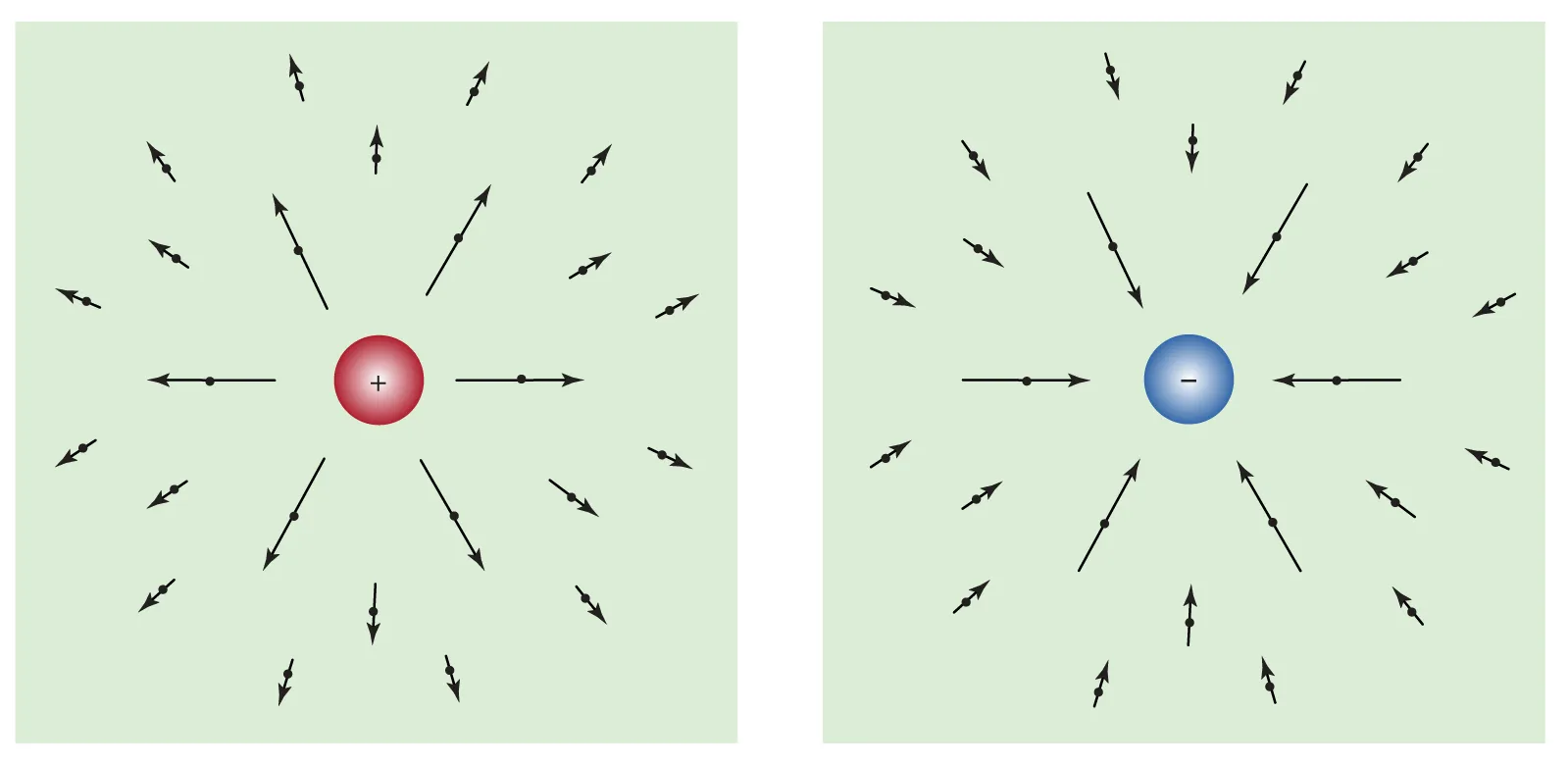
The field of physics is filled with fascinating concepts and theories that explain the fundamental workings of the universe. One such concept that holds great significance in the realm of electromagnetism is Poynting’s theorem, also known as the law of energy flow. Developed by an English physicist named John Henry Poynting in the late 19th century, this theorem provides a mathematical framework for understanding how energy flows in electromagnetic fields.
Poynting’s theorem plays a crucial role in various fields, from electrical engineering to astrophysics, and has significant applications in everyday technology. In this article, we will explore 18 extraordinary facts about Poynting’s theorem that shed light on its importance and implications. So, let’s embark on a journey to unravel the secrets behind the law of energy flow in electromagnetism!
Key Takeaways:
- Poynting’s theorem helps us understand how energy flows between electric and magnetic fields, like a secret code that reveals the hidden dance of energy in the world of electromagnetism.
- By using Poynting’s theorem, scientists can figure out the direction and amount of energy carried by electromagnetic fields, just like detectives solving the mystery of energy flow in space.
Poynting’s theorem describes the flow of energy in electromagnetic fields.
Poynting’s theorem is a fundamental concept in electromagnetism that allows us to understand how energy is transferred between electric and magnetic fields.
It was formulated by John Henry Poynting in 1884.
John Henry Poynting, a British physicist, introduced this theorem in his paper titled “On the Transfer of Energy in the Electromagnetic Field.”
The theorem relates the electromagnetic fields to the rate of energy transfer.
Poynting’s theorem mathematically links the electric field, magnetic field, and the flow of energy in a given region of space.
It is based on Maxwell’s equations.
Poynting’s theorem is derived from James Clerk Maxwell’s equations, which form the foundation of classical electromagnetism.
The theorem is expressed mathematically as a vector equation.
The mathematical expression of Poynting’s theorem involves the cross product of the electric field and magnetic field vectors.
Poynting’s theorem quantifies the power density of an electromagnetic field.
By calculating the magnitude of the Poynting vector, we can determine the amount of power per unit area that is being carried by an electromagnetic field.
It applies to various electromagnetic phenomena.
Poynting’s theorem can be used to analyze a wide range of phenomena, including radio waves, light propagation, and electromagnetic radiation.
The theorem is crucial in understanding the behavior of antennas.
Antennas operate based on the principles outlined in Poynting’s theorem, enabling the efficient transmission and reception of electromagnetic signals.
It provides insights into the conservation of energy.
Poynting’s theorem demonstrates that energy is conserved in electromagnetic systems, as the rate of energy flow into a region is equal to the rate of energy flow out of that region.
The Poynting vector gives the direction of energy flow.
The Poynting vector not only represents the magnitude of energy flow but also indicates the direction in which energy is being transported by the electromagnetic field.
The integration of the Poynting vector over a closed surface gives the total power passing through that surface.
By integrating the Poynting vector over a defined surface, we can calculate the total power passing through that surface, providing valuable information for various applications.
Poynting’s theorem helps understand the behavior of electromagnetic waves in different mediums.
By applying Poynting’s theorem, we can analyze how electromagnetic waves interact with different materials and how energy is transferred across boundaries.
It is a fundamental principle in the field of optics.
Much of our understanding of light propagation and optics is based on Poynting’s theorem, which allows us to study the behavior of electromagnetic waves in different optical systems.
Poynting’s theorem plays a crucial role in the field of wireless communication.
The principles outlined in Poynting’s theorem are essential for designing and optimizing wireless communication systems, ensuring efficient transmission and reception of signals.
It helps quantify the radiation pattern of antennas.
Poynting’s theorem enables us to calculate the radiation pattern of antennas, which describes how the power is distributed in different directions when an antenna is transmitting electromagnetic waves.
The theorem is used in the analysis of electromagnetic compatibility.
Poynting’s theorem is utilized to assess the interference between different electromagnetic devices and systems, ensuring compatibility and minimizing unwanted electromagnetic emissions.
Poynting’s theorem is a cornerstone in the study of electromagnetic energy conversion.
Understanding Poynting’s theorem is crucial for analyzing the conversion of electromagnetic energy from one form to another, such as in generators and motors.
Poynting’s theorem showcases the interconnectedness of electric and magnetic fields.
Poynting’s theorem demonstrates how electric and magnetic fields are intertwined, constantly exchanging energy and propagating electromagnetic waves through space.
Conclusion
In conclusion, Poynting’s theorem is a fundamental concept in electromagnetism that describes the energy flow in electromagnetic fields. It provides valuable insights into how energy is transferred between electric and magnetic fields. By understanding this theorem, physicists and engineers have made significant advancements in the design and development of various technologies, such as antennas, power systems, and wireless communication.Poynting’s theorem has numerous applications in both theoretical and practical aspects of physics. It helps us comprehend the behavior of electromagnetic waves, the interaction between fields and matter, and the conservation of energy in electromagnetism. Furthermore, it has provided a solid foundation for the study of Maxwell’s equations, which form the basis of classical electrodynamics.Overall, Poynting’s theorem plays a crucial role in our understanding of energy transfer and propagation in electromagnetic systems. Its applications span from everyday electronic gadgets to complex scientific experiments. As technology continues to advance, further research and exploration of this theorem will undoubtedly yield new discoveries and innovations.
FAQs
Q: What is Poynting’s theorem?
A: Poynting’s theorem is a fundamental concept in electromagnetism that describes the flow of energy in electric and magnetic fields. It provides a mathematical relationship between the energy density of a field and its associated flux.
Q: How does Poynting’s theorem explain the energy flow?
A: Poynting’s theorem states that the energy flow in an electromagnetic field is proportional to the cross product of the electric and magnetic fields. This flow is represented by the Poynting vector, which points in the direction of energy propagation.
Q: What are some practical applications of Poynting’s theorem?
A: Poynting’s theorem has numerous applications in various fields. It helps us understand the behavior of electromagnetic waves, design antennas, analyze power systems, and study wireless communication. It is also essential for the development of technologies such as radar systems, satellite communication, and high-speed data transmission.
Q: How does Poynting’s theorem relate to Maxwell’s equations?
A: Poynting’s theorem is derived from Maxwell’s equations, which are a set of fundamental equations that describe the behavior of electric and magnetic fields. It provides a mathematical relationship between the electromagnetic fields and the energy they carry.
Q: Why is Poynting’s theorem important?
A: Poynting’s theorem is essential for understanding the transfer and conservation of energy in electromagnetism. It allows us to analyze and design various electromagnetic systems, from simple circuits to complex devices. It also provides a deeper understanding of the fundamental principles governing the behavior of electromagnetic fields.
Poynting's theorem is a fascinating aspect of electromagnetism, but there's more to explore in the world of physics. Dive into the life and work of James Clerk Maxwell, a pioneer in electromagnetic theory, and uncover surprising facts about his contributions. For a broader look at the field, check out our collection of intriguing physics facts that will pique your curiosity. And if you're interested in how energy moves through living systems, don't miss our article on the captivating energy flow in ecosystems.
Was this page helpful?
Our commitment to delivering trustworthy and engaging content is at the heart of what we do. Each fact on our site is contributed by real users like you, bringing a wealth of diverse insights and information. To ensure the highest standards of accuracy and reliability, our dedicated editors meticulously review each submission. This process guarantees that the facts we share are not only fascinating but also credible. Trust in our commitment to quality and authenticity as you explore and learn with us.


